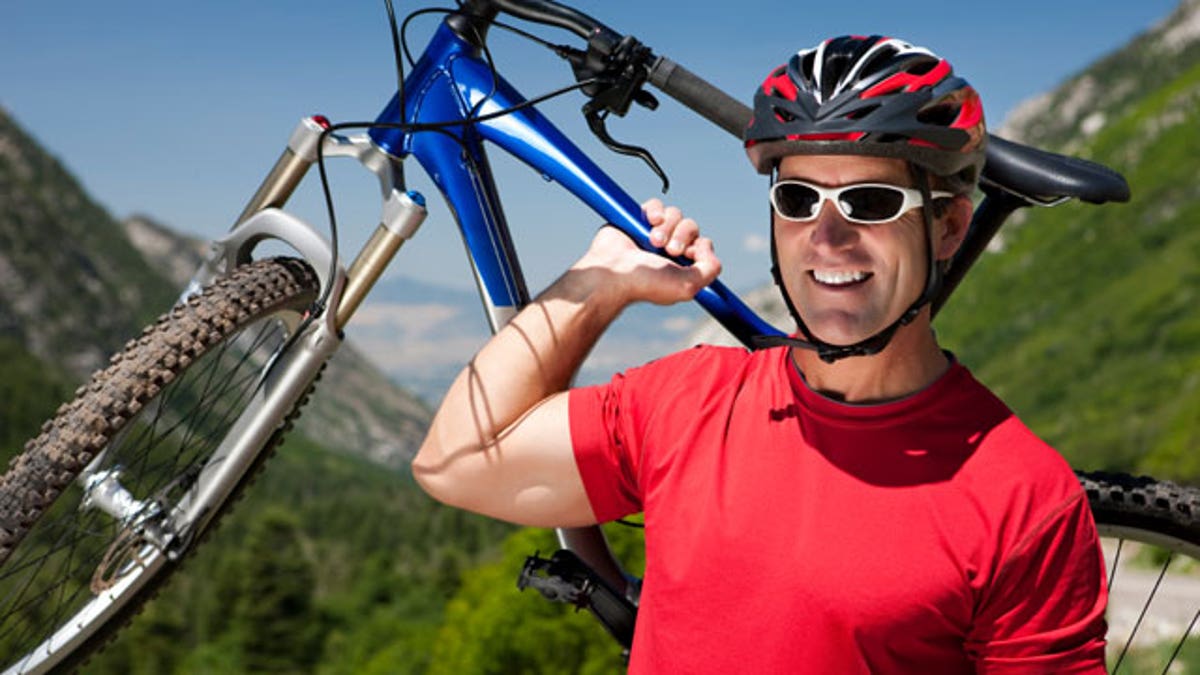
(©2009 Avid Creative, Inc.)
Even as America reaches record levels of obesity, more guys than ever are taking up endurance racing and otherwise extreme fitness routines, often in their middle age. The two trends are clearly at odds.
Most research paints a pretty grim picture of our national health situation. A recent study by researchers at Harvard and Columbia estimates that 50 percent of adults in the United States will be obese in 2030 if current trends prevail. Leading medical journals like The Lancet call obesity a “pandemic,” and it was a topic of conversation at the United Nations High-Level Meeting on Non-Communicable Diseases in September.
We're working too many hours, eating too many calories and sitting on our asses too often.
Sitting, the American Cancer Society says, will kill you.
The Rise of Endurance Racing
At the other end of the spectrum, guys are pushing themselves to the physical limits in races every bit as mean as they sound: The Canadian Death Race, Marathon of the Sands, The Jungle Ultra, Badwater Ultramarathon, The Longest Day, Ironman.
Triathlons are a good benchmark to measure interest in endurance racing because they're multi-sport and typically thought of as the territory of the elite. According to USA Triathlon, membership grew from 15,937 in 1993 to 133,876 in 2010. That year, they issued an additional 326,732 single-day permits.
Interestingly, the age bracket with the largest number USAT members is men aged 40-49. At this year's Ironman -- the longest, most difficult category of triathlons -- in Lake Placid, N.Y., the two age brackets with the most finishers were men aged 40-44, followed by men aged 45-49.
"The exercise movement has two really big strengths right now,” says Adam Bornstein, fitness expert and editorial director at Livestrong.com. “One of them is CrossFit and the other is these endurance-type races.”
CrossFit is a strength and conditioning program that incorporates a variety of activities like kettlebell training, rowing and sprinting to achieve a sort of versatility.
“The constantly varying, functional, high-intensity program is training for the unknown and unknowable,” says Jimi Letchford, CrossFit's CMO.
“We're looking for a broad inclusive fitness that trains an athlete for anything somebody might throw at them.”
Letchford, who was a Marine, explained that you want your fitness to answer for you after the 15-mile hike in to your target, when you're most vulnerable.
________________________________________________________________________________
More From AskMen:
The U.S. Military Force Workout
________________________________________________________________________________
CrossFit and Functional Fitness
The idea behind CrossFit -- to a greater degree than something like P90X, which is more about sculpting an attractive body -- is that fitness should be a lifestyle and a tool rather than just a medium to stay trim.
Beyond the company's 2,000-plus affiliate gyms, CrossFit has its games and an active online community.
“It's no longer about just being able to run in a straight line or showing you can get a big chest,” says Will Dean, founder of Tough Mudder, a one-day endurance event that takes participants over a dozen miles of obstacles ranging from wall climbs to a dash through live electrical wires. “It's a genuine functional fitness. I think that's one of the reasons why CrossFit has exploded so much over the last few years.”
Tough Mudder, which held its first event in Allentown, Pa., in 2010, will grow to 29 events in the U.S. and around the world in 2012. One quarter of the participants are over age 40.
What Happened to Golf?
Of course, on a typical Monday, most of us aren't hiking 15 miles to secure a target; we're sitting at a desk for 10 hours. So what explains the trend? “If you can really pinpoint the endurance-type stuff to anywhere,” Bornstein says, “it's almost kind of the Born to Run revolution -- barefoot running, getting back to your roots of moving and playing more freely.”
Christopher McDougall's book follows a tribe of barefoot ultramarathoners in Mexico.
The unifying principle of all these activities, which range from fun and recreational to fairly gritty and serious (two people, both over age 40, died during the swimming leg of the recent Nautica NYC Triathlon), is that they're all lifestyle choices, things you're not going to pick up unless you really enjoy them for the competition, the risk or the camaraderie. These are incentives the average gym goer rarely entertains.
Older guys getting hardcore
But that doesn't fully explain why so many older guys are in the mix. The subtext here seems to have something to do with our attitude toward youth in America. We don't value wisdom and experience the way we once did. At one time, a fat old man with gout was a paragon of success.
Since the recession, the unemployment rate among older people has increased, and for those who have been able to find work, it took a much longer time than in recessions past. Add to that an official retirement age of 67 for anyone born after 1960, and we're looking at an aging population feeling pressure to keep up.
Knowing how to use a smartphone helps, but the proof is in the 50-mile race through the mountains. The future of business outings may look less like a round of golf and more like a day at Tough Mudder.
“Somebody is going to die at our event,” Dean says. “Let's not kid ourselves. Somebody is going to have a heart attack"
It beats death by sitting.
